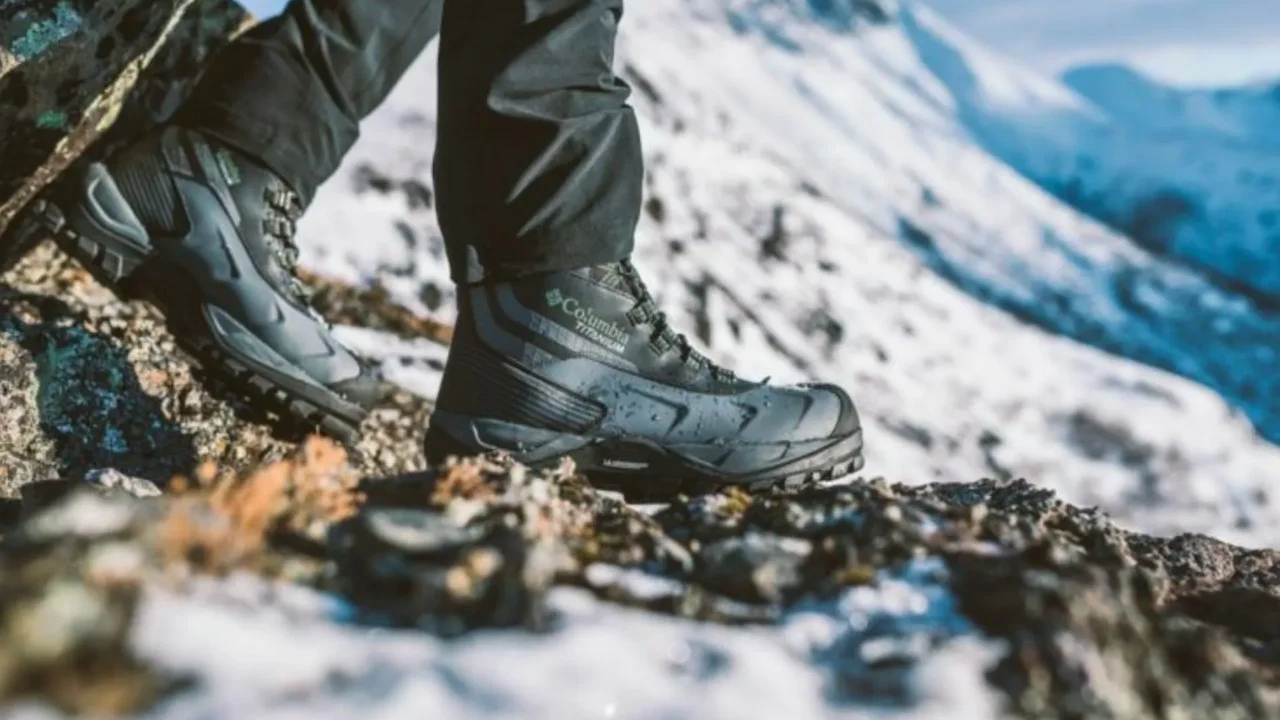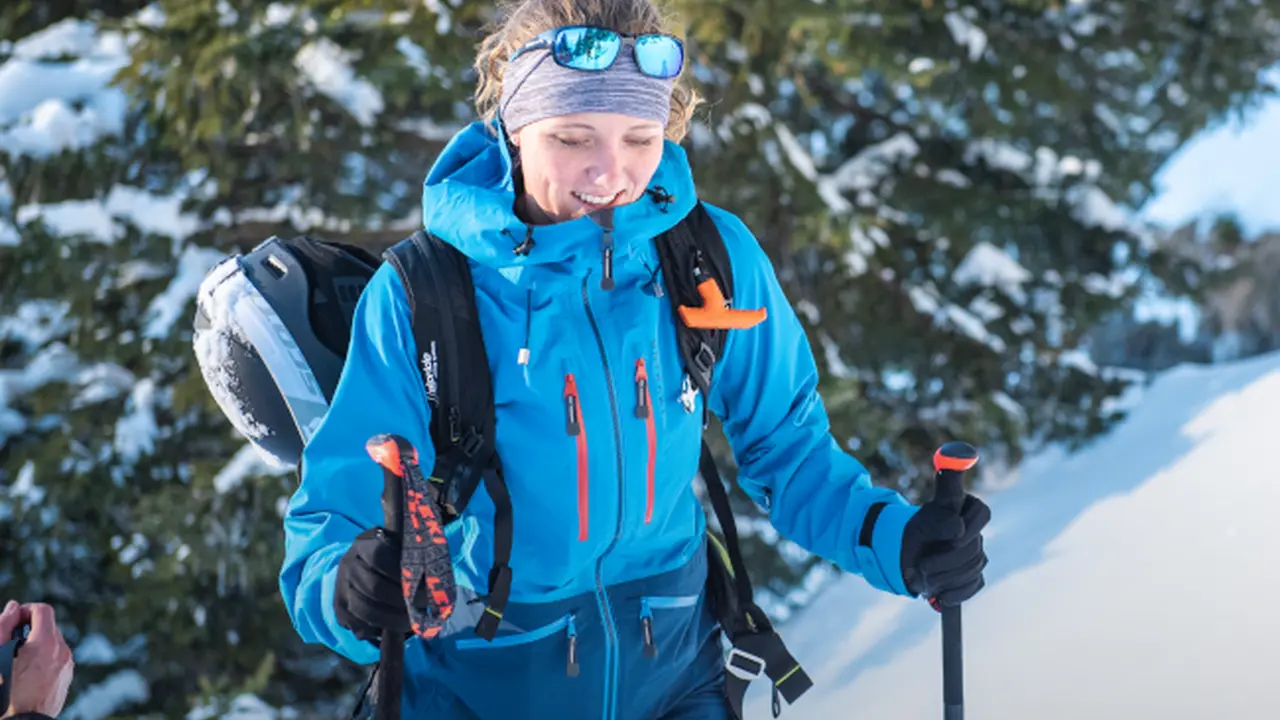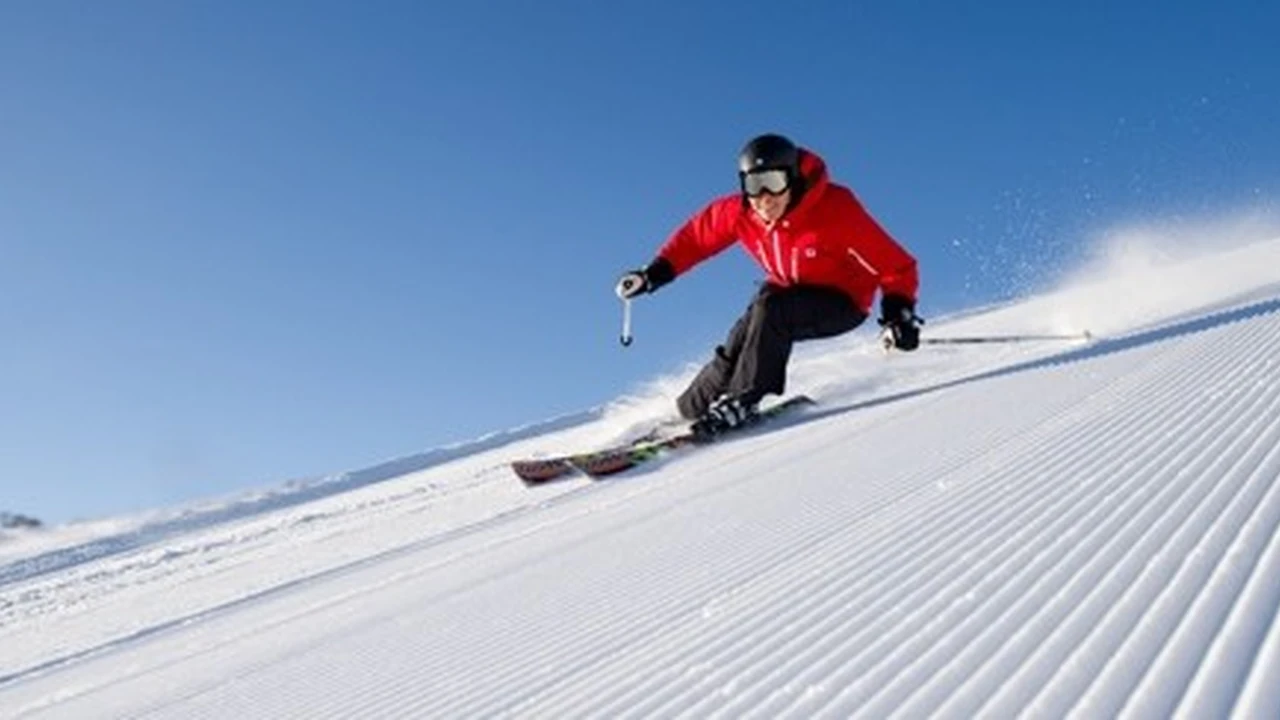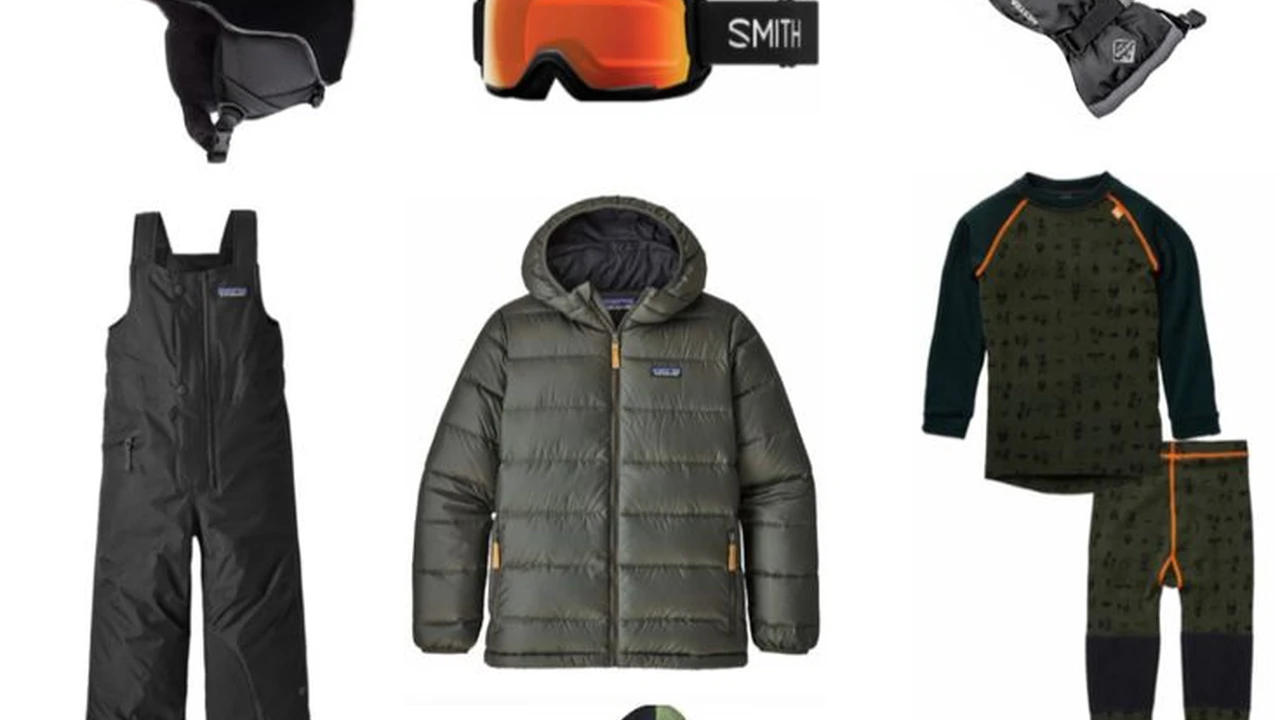
Best Winter Hiking Boots for Snowy Trails and Cold Weather
Hey there, fellow adventurers! Winter hiking is an absolute blast, isn't it? There's something truly magical about crunching through fresh snow, seeing frosted trees, and enjoying the crisp, clean air. But let's be real, to truly enjoy those frosty treks, you need the right gear, and nothing is more crucial than your winter hiking boots. We're talking about keeping your feet warm, dry, and firmly planted on slippery surfaces. A good pair of winter hiking boots isn't just a luxury; it's a necessity for comfort, safety, and overall enjoyment of the great outdoors when temperatures drop.
In this comprehensive guide, we're going to dive deep into everything you need to know about choosing the best winter hiking boots. We'll cover what makes a boot great for winter, the key features to look for, and even recommend some top-notch models that have proven their worth in icy conditions. Whether you're planning a casual stroll on a packed trail or a more challenging ascent up a snowy peak, we've got you covered. So, lace up (metaphorically speaking for now) and let's get started on finding your perfect winter hiking companions!
Understanding Winter Hiking Boot Essentials Insulation and Warmth
When it comes to winter hiking boots, warmth is king. You don't want your toes turning into icicles halfway through your hike. This is where insulation comes into play. Most winter boots use synthetic insulation, often measured in grams. The higher the gram count, the warmer the boot. For mild winter conditions, 200g to 400g of insulation might be sufficient. But if you're heading into seriously cold temperatures, think 600g or even 800g. Some boots also use natural materials like wool or fleece for added warmth and comfort.
Beyond just the insulation, the overall construction of the boot contributes to its warmth. A well-designed boot will minimize cold spots and create a cozy environment for your feet. Look for boots with a good shaft height to keep snow out and provide ankle support, which also helps retain warmth. Remember, proper socks (wool or synthetic, never cotton!) are also crucial for maximizing the warmth provided by your boots.
Waterproofing and Breathability Staying Dry on Snowy Trails
Warmth is great, but it's useless if your feet get wet. Wet feet quickly become cold feet, and that's a recipe for discomfort and even frostbite. So, waterproofing is non-negotiable for winter hiking boots. Most quality winter boots use waterproof membranes like Gore-Tex, eVent, or proprietary technologies from the boot manufacturers. These membranes are designed to keep external moisture out while still allowing some internal moisture (sweat) to escape, which is where breathability comes in.
While full waterproofing is essential, a degree of breathability is also important to prevent your feet from getting sweaty and then cold. It's a delicate balance, as highly breathable materials often compromise on waterproofing, and vice versa. For winter, prioritize waterproofing, but be aware that some breathability will help manage internal moisture. Look for boots with gusseted tongues to prevent snow and water from seeping in through the laces.
Traction and Grip Navigating Icy and Snowy Surfaces
Winter trails can be incredibly slippery, ranging from packed snow to slick ice. Excellent traction is paramount for safety and confidence. The outsole of a winter hiking boot is designed with specific lug patterns and rubber compounds to maximize grip. Look for deep, multi-directional lugs that can bite into snow and soft terrain. Some boots feature specialized rubber compounds that remain flexible in cold temperatures, providing better grip on icy surfaces.
Consider boots with features like Vibram Arctic Grip outsoles, which are specifically engineered for superior traction on wet ice. While no boot can guarantee 100% slip-proof performance on all ice, these specialized technologies significantly improve your footing. For extremely icy conditions, you might still want to consider adding microspikes or crampons, but a good boot will provide a solid foundation.
Comfort and Fit Finding Your Perfect Winter Hiking Boot
Just like any hiking boot, comfort and fit are critical. An ill-fitting boot can lead to blisters, discomfort, and even injuries, especially on longer hikes. When trying on winter boots, remember to wear the type of socks you'll be hiking in. There should be enough room to wiggle your toes, but your heel shouldn't slip excessively. Your foot should feel secure without any pressure points.
Consider the boot's weight; lighter boots can reduce fatigue on long treks, but sometimes heavier boots offer more insulation and support. The lacing system is also important for achieving a secure and customizable fit. Some boots feature D-rings or speed hooks for quick and easy lacing. Pay attention to the ankle support; a higher cut boot generally offers more stability, which is beneficial on uneven, snowy terrain.
Top Winter Hiking Boot Recommendations for Diverse Conditions
Alright, let's get to some specific recommendations. We've picked out a few top contenders that excel in different areas, offering a range of features and price points. Remember, prices can fluctuate, so always check current retail listings.
Oboz Bridger 10 Inch Insulated Waterproof Winter Hiking Boot
The Oboz Bridger 10-inch is a fantastic all-around winter hiking boot, known for its robust construction and excellent warmth. It's a go-to for many serious winter hikers.
- Insulation: 200g 3M Thinsulate insulation, which is a good balance for most cold conditions without being overly bulky.
- Waterproofing: B-DRY waterproof membrane, Oboz's proprietary technology, ensures your feet stay dry.
- Traction: Features Oboz's Winterized Sawtooth outsole with deep, aggressive lugs designed to grip snow and ice. The rubber compound is specifically formulated to remain pliable in cold temperatures.
- Comfort/Fit: Known for its comfortable O FIT Insole and supportive mid-cut design. The 10-inch height provides excellent snow shedding and ankle support.
- Use Case: Ideal for day hikes in moderate to cold winter conditions, snowshoeing, and general winter outdoor activities. It handles packed snow and light powder very well.
- Pros: Excellent warmth-to-weight ratio, superior traction, very comfortable out of the box, durable construction.
- Cons: Might be overkill for very mild winter days, not the lightest option available.
- Estimated Price: $180 - $220 USD
Merrell Thermo Chill Mid Waterproof Winter Hiking Boot
The Merrell Thermo Chill Mid is a popular choice for those seeking a balance of warmth, waterproofing, and a more approachable price point. It's a solid performer for casual to moderate winter hikes.
- Insulation: 200g M Select WARM lightweight, low-bulk insulation. This provides ample warmth for most winter conditions without feeling clunky.
- Waterproofing: M Select DRY waterproof membrane seals out water and lets moisture escape.
- Traction: Merrell's proprietary M Select GRIP outsole with 5mm deep lugs offers reliable traction on snow and slush.
- Comfort/Fit: Features a comfortable EVA midsole for stability and comfort. The mid-cut design provides good ankle support.
- Use Case: Great for everyday winter wear, light to moderate winter hiking, snow shoveling, and general cold-weather activities.
- Pros: Good value for money, comfortable for extended wear, effective waterproofing, decent traction.
- Cons: Traction might not be as aggressive as some higher-end boots on very icy terrain, insulation might not be enough for extreme cold.
- Estimated Price: $120 - $150 USD
Columbia Bugaboot Plus IV Omni-Heat Winter Hiking Boot
The Columbia Bugaboot Plus IV is a powerhouse when it comes to extreme cold. If you're facing seriously frigid temperatures, this boot is designed to keep your feet toasty.
- Insulation: 600g insulation combined with Columbia's Omni-Heat reflective lining. This combination is designed to reflect your body heat back to your foot, providing exceptional warmth.
- Waterproofing: Omni-Tech waterproof breathable seam-sealed membrane construction.
- Traction: Omni-Grip non-marking traction rubber outsole with multi-directional lugs for grip on various winter surfaces.
- Comfort/Fit: Techlite lightweight midsole for long-lasting comfort, superior cushioning, and high energy return. It's a robust boot but surprisingly comfortable for its warmth rating.
- Use Case: Excellent for very cold winter conditions, deep snow, snowshoeing, ice fishing, and activities where maximum warmth is a priority.
- Pros: Outstanding warmth for extreme cold, very effective waterproofing, good cushioning.
- Cons: Can feel bulky due to the high insulation, might be too warm for milder winter days, traction is good but not specialized for pure ice like Arctic Grip.
- Estimated Price: $160 - $200 USD
Salomon Toundra Pro CSWP Winter Hiking Boot
The Salomon Toundra Pro is a premium option for serious winter adventurers who demand top-tier performance in harsh conditions. It blends warmth, protection, and agility.
- Insulation: Aerotherm Aerogel insulation, which is a very lightweight and highly effective insulator, providing warmth down to extreme temperatures (rated to -40°F/-40°C).
- Waterproofing: ClimaSalomon Waterproof (CSWP) membrane ensures complete waterproof protection.
- Traction: Winter Contagrip outsole with aggressive, deep lugs specifically designed for maximum grip on snow and ice. The rubber compound remains flexible in freezing temperatures.
- Comfort/Fit: Features an OrthoLite sockliner for enhanced comfort and cushioning. The fit is precise, offering good support without feeling restrictive.
- Use Case: Ideal for mountaineering, serious winter hiking, snowshoeing in challenging terrain, and extended trips in very cold environments.
- Pros: Exceptional warmth for its weight, superior traction on snow and ice, durable and protective, comfortable for long treks.
- Cons: Higher price point, might be overkill for casual winter walks.
- Estimated Price: $220 - $280 USD
Keen Revel IV Polar Boot for Winter Hiking
The Keen Revel IV Polar is a popular choice known for its comfort, warmth, and signature Keen toe protection. It's a versatile boot for various winter activities.
- Insulation: 200g Keen.Warm insulation combined with a Heat Trapolator system (three layers of heat-trapping materials underfoot) and thermal foil barrier for superior warmth.
- Waterproofing: Keen.Dry waterproof, breathable membrane.
- Traction: Keen.Polar Traction outsole with 5mm multi-directional lugs designed to grip on snow and ice.
- Comfort/Fit: Features a removable thermal heat shield footbed and a comfortable fit, often with a wider toe box that Keen is known for.
- Use Case: Excellent for general winter hiking, snowshoeing, and everyday cold-weather wear. Good for those who prefer a roomier toe box.
- Pros: Very comfortable, excellent warmth, good traction, durable, signature toe protection.
- Cons: Can feel a bit bulky for some, not as lightweight as some other options.
- Estimated Price: $170 - $200 USD
Comparing Winter Hiking Boots Key Differences and Considerations
When you're looking at these different boots, it's helpful to compare them across a few key metrics to see which one aligns best with your specific needs and the conditions you'll be facing.
Insulation Levels and Temperature Ratings
As we discussed, insulation is measured in grams, and higher numbers mean more warmth. The Oboz Bridger and Merrell Thermo Chill (200g) are great for typical winter days, maybe down to 0°F (-18°C) or a bit colder if you're active. The Columbia Bugaboot (600g + Omni-Heat) and Salomon Toundra Pro (Aerogel, rated to -40°F/-40°C) are designed for extreme cold. The Keen Revel IV (200g + Heat Trapolator) offers a unique approach to warmth underfoot. Consider the lowest temperatures you expect to encounter. It's always better to be slightly over-insulated than under-insulated.
Outsole Technology and Grip Performance
This is where boots can really differentiate themselves. While all these boots offer good winter traction, some excel in specific areas. The Oboz Bridger and Salomon Toundra Pro have very aggressive, cold-weather specific rubber compounds and lug patterns that perform exceptionally well on varied snow and ice. The Merrell and Columbia offer solid general winter traction. If you're frequently on icy patches, look for boots with specialized ice-gripping technologies like Vibram Arctic Grip (though none of our specific recommendations feature it, it's a good feature to look for in other models).
Weight and Bulk for Different Activities
More insulation and robust construction often mean more weight and bulk. The Merrell Thermo Chill is generally lighter and less bulky, making it a good choice for casual use or faster-paced hikes where extreme cold isn't an issue. The Columbia Bugaboot, while incredibly warm, is noticeably bulkier. The Oboz, Salomon, and Keen strike a good balance, offering significant warmth and protection without feeling like lead weights on your feet. If you're doing long distances or steep ascents, a lighter boot can make a big difference in fatigue.
Price Points and Value for Money
Winter hiking boots can be a significant investment. The Merrell Thermo Chill offers excellent value for its price, making it a great entry-level or budget-friendly option. The Oboz Bridger and Keen Revel IV sit in the mid-range, offering a great balance of features and performance for their cost. The Salomon Toundra Pro is at the higher end, reflecting its premium materials and extreme cold-weather capabilities. Consider how often you'll use the boots and the conditions you'll face when deciding how much to invest. A more expensive boot might last longer and perform better in challenging conditions, offering better long-term value.
Essential Winter Hiking Boot Care and Maintenance Tips
Once you've invested in a great pair of winter hiking boots, you'll want to make sure they last. Proper care and maintenance are key to extending their lifespan and ensuring they continue to perform well.
Cleaning Your Winter Hiking Boots
After each hike, especially if you've been in muddy or slushy conditions, give your boots a quick clean. Use a soft brush or damp cloth to remove dirt, mud, and salt stains. Pay attention to the seams and around the sole where dirt can accumulate. For stubborn grime, you can use a mild soap specifically designed for outdoor gear, but avoid harsh detergents that can strip away waterproofing treatments.
Drying Your Boots Properly
Never dry your boots by direct heat sources like radiators, fireplaces, or direct sunlight. This can damage the materials, especially leather and waterproof membranes, leading to cracking and delamination. Instead, remove the insoles and laces, open the boots up as much as possible, and let them air dry in a well-ventilated area at room temperature. You can stuff them with newspaper to absorb moisture, changing the paper every few hours until dry. Boot dryers with gentle, circulating air are also an excellent investment.
Re-Waterproofing and Conditioning
Over time, the Durable Water Repellent (DWR) finish on the outer fabric of your boots will wear off, causing water to 'wet out' rather than bead up. While the internal waterproof membrane will still keep your feet dry, re-applying a DWR treatment will help the boots shed water more effectively and maintain breathability. There are various spray-on or wash-in DWR products available. If your boots have leather components, consider using a leather conditioner periodically to keep the leather supple and prevent cracking.
Proper Storage for Longevity
When storing your boots for the off-season, make sure they are completely clean and dry. Store them in a cool, dry place away from direct sunlight and extreme temperatures. Avoid storing them in plastic bags, as this can trap moisture and lead to mildew. Keeping them in their original box or a breathable shoe bag is ideal. You can also stuff them with crumpled newspaper or boot trees to help them retain their shape.
Winter Hiking Safety and Additional Gear Considerations
Having the best winter hiking boots is a huge step, but it's just one part of a safe and enjoyable winter adventure. Here are a few other things to keep in mind:
Layering Your Clothing for Winter Hikes
Dress in layers! This is crucial for managing your body temperature. Start with a moisture-wicking base layer, add an insulating mid-layer (fleece or down), and top it off with a waterproof and windproof outer shell. You can add or remove layers as your activity level and the weather change.
Choosing the Right Winter Hiking Socks
As mentioned, avoid cotton socks at all costs. Cotton absorbs moisture and stays wet, leading to cold feet and blisters. Opt for wool (like Merino wool) or synthetic blends. These materials wick moisture away from your skin, keeping your feet dry and warm. Consider different thicknesses based on your boot's insulation and the expected temperatures.
Microspikes and Snowshoes When to Use Them
Even the best winter hiking boots have their limits. For icy trails, microspikes (traction devices that strap onto your boots) are invaluable. They provide aggressive grip on slick surfaces. If you're venturing into deep snow, snowshoes are essential. They distribute your weight over a larger area, preventing you from sinking in. Always check trail conditions before you go and pack these items if necessary.
Navigation and Emergency Preparedness
Winter conditions can change rapidly, and trails can become obscured by snow. Always carry a map, compass, or a fully charged GPS device/phone with downloaded maps. Let someone know your hiking plans and expected return time. Pack extra layers, high-energy snacks, water (in an insulated bottle to prevent freezing), a headlamp, a first-aid kit, and a fire starter. Being prepared can make all the difference.
Final Thoughts on Choosing Your Winter Hiking Boots
Choosing the best winter hiking boots is a personal decision, but by understanding the key features – insulation, waterproofing, traction, and fit – you're well on your way to making an informed choice. Whether you opt for the rugged warmth of the Oboz Bridger, the budget-friendly comfort of the Merrell Thermo Chill, the extreme cold protection of the Columbia Bugaboot, the premium performance of the Salomon Toundra Pro, or the comfortable warmth of the Keen Revel IV, you'll be investing in countless hours of enjoyable winter exploration.
Remember to consider your specific needs: how cold will it be? How much snow will there be? What kind of terrain will you be on? And don't forget to try them on with your preferred winter hiking socks! With the right pair of boots on your feet, you'll be ready to embrace the beauty and challenge of winter hiking, staying warm, dry, and secure every step of the way. Happy trails!
:max_bytes(150000):strip_icc()/277019-baked-pork-chops-with-cream-of-mushroom-soup-DDMFS-beauty-4x3-BG-7505-5762b731cf30447d9cbbbbbf387beafa.jpg)






